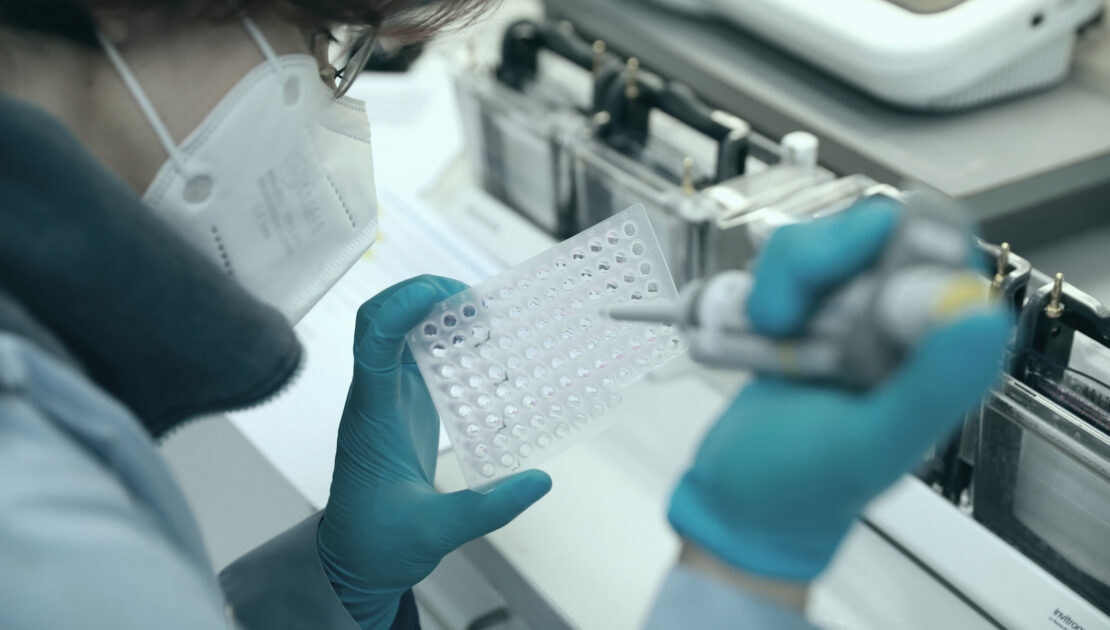invIOs’s novel clinical stage lead therapeutic candidate, APN401, combines advances in immune cell therapy and RNA interference methods to treat advanced solid cancers.

The race against cancer – targeting Cbl-b in cellular therapy
Immune therapy – hitting new targets
Immune therapy is still one of the fastest-growing areas in cancer research, partly due to the success of checkpoint inhibition. Approaches releasing the brakes on immune cells have been shown to succeed across cancer types, providing hope for future innovation in the area. However, it is important that this promising concept can be adapted to new targets. Novel approaches are needed to target various solid tumors, which either are unresponsive to immune cell attack or relapse after therapy [1]. While pathways such as PD-1/PD-L1 have been established for some time, invIOs is targeting a new immune checkpoint molecule, Cbl-b.
Conventional therapies tend to involve the use of small molecules as drugs due to their low complexity, cost of production, rapid upscaling and potential for oral delivery. The drugs are designed to change the activity of proteins by binding directly to their active sites. Although this process is simple and reliable, only a small proportion of proteins have active binding sites that are “druggable” targets for small molecules[2].
Intracellular targets – hiding in plain sight
By expanding therapies beyond drug classes such as small molecules and other approaches, we can unlock countless novel targets to better activate the immune system against cancer. RNA interference methods, using a natural mechanism for sequence-specific gene silencing, are now able to target molecules for unleashing immune responses, but come with their own set of challenges. invIOs applies an alternative form of RNA, termed small interfering RNA or “siRNA”, which allows specific blocking of normal protein production.
The challenges start even before RNA enters cells, as it faces attack by RNAses. These enzymes are essential to protect cells against invading pathogens and are present across cell types and tissues and in fluids such as tears, sweat and saliva[3]. The next challenge is entering the cell. The RNA molecule has a negative charge; membranes only permit entry by small uncharged molecules, meaning that clever strategies are needed to get RNA past this natural defence mechanism[4]. Finally, once inside the cell, the RNA must evade detection and thus potential destruction by internal sensing mechanisms[5].
APN401 and Cbl-b – advancing cellular therapy into solid tumors
Highly innovative solutions combining recent advances in cancer therapy are needed to overcome the challenges associated with RNA therapy. This is the approach that invIOs is taking with APN401, which is currently in Phase 1b clinical trials. It combines cell therapy strategies with targeting the novel immune checkpoint inhibitor Cbl-b – or Casitas B-lineage lymphoma proto-oncogene-b, to give it its full name – to unlock previously hidden targets.
Cbl-b is a protein found inside cells that plays a crucial role in immune responses against tumors[6]. Specifically, it is a key negative regulator of lymphocyte activation. By temporarily silencing Cbl-b, this “stop signal” is deactivated, resulting in highly specific and increased immune cell activation against cancer cells. This is done by introducing Cbl-b directed siRNA into immune cells from the patient’s blood ex vivo, followed by additional processing to facilitate uptake of the siRNA molecules. The focus on introducing siRNA into selected immune cells allows a precise approach for blocking Cbl-b, which is known to exhibit negative effects on anti-tumor recognition and elimination. Overall, a correlation can be observed between Cbl-b silencing (at both the mRNA and protein levels) and cytokine induction (IFN-g, IL-2, TNF-a).
APN401 is the lead candidate that leverages the EPiC cell therapy platform that invIOs is currently developing, utilizing the knowledge of its APN401 asset and targeting molecules to activate immune cell responses in various cancers. The treatment has shown initial signs of activity during first-in-human clinical trials in patients with advanced solid tumours. It is now entering a new round of trials, increasing our knowledge of the potential power of this tool to treat cancers.

